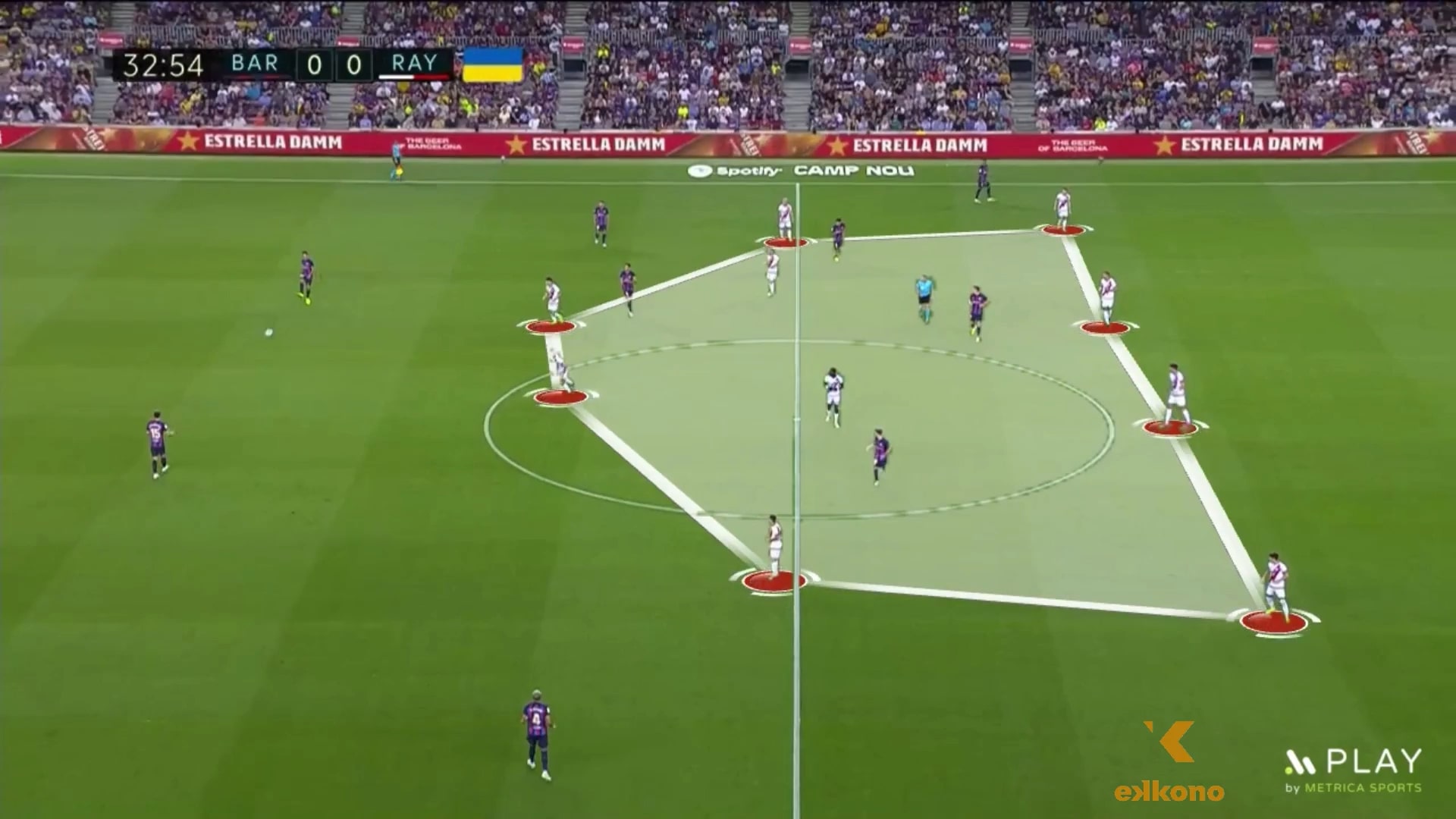
You probably often hear the term ‘mid-block’ when talking about how teams defend. But what does it mean? We understand as a mid-block as the structure that a team uses when being is out-of-possession and defending in a compact block in the middle third of the pitch. So, the key in order to differentiate between a medium-block and a low-block, is the depth of the block. This defensive strategy, is commonly used for many teams in many phases of the game, where there is no option to go and press high but the team does not want to concede too much space to progress to the opponent. In this article, we will analyze why the defensive line height is so important when defending in a mid-block.
“DEFENDING WELL IN A MID-BLOCK IS MORE THAN JUST POSITIONING YOUR PLAYERS IN THE MIDDLE THIRD OF THE PITCH. ASIDE FROM KEEPING THE DEFENSIVE LINE HIGH, ANTICIPATING AND ADJUSTING THE DEFENDERS POSITIONING WILL BE KEY TO ENSURE A GOOD DEFENSIVE PERFORMANCE IN A MEDIUM BLOCK.”

1-compact-block
In this example, Rayo Vallecano's defensive line is high, ensuring the compactness of the entire defensive block
Recover the depth and push the defensive line forward always when possible
In cases when the opposing team plays backward and the first lines of the block are pushing higher to exert pressure, the defense line must be one with them and also push forward. Also, we must note that when the opposite team plays back it is a good chance to transform our medium defensive block into a high pressing block, by pushing up the defense line and recover the ball near the opposite goal, where a potential offensive transition would be more dangerous.
In situations where the opponent starts to play the ball inside the block, pressure must be exerted on the player who is in control of the ball to try not to give him options to continue the attack and not allow them to have time and space to play a ball behind your defense.
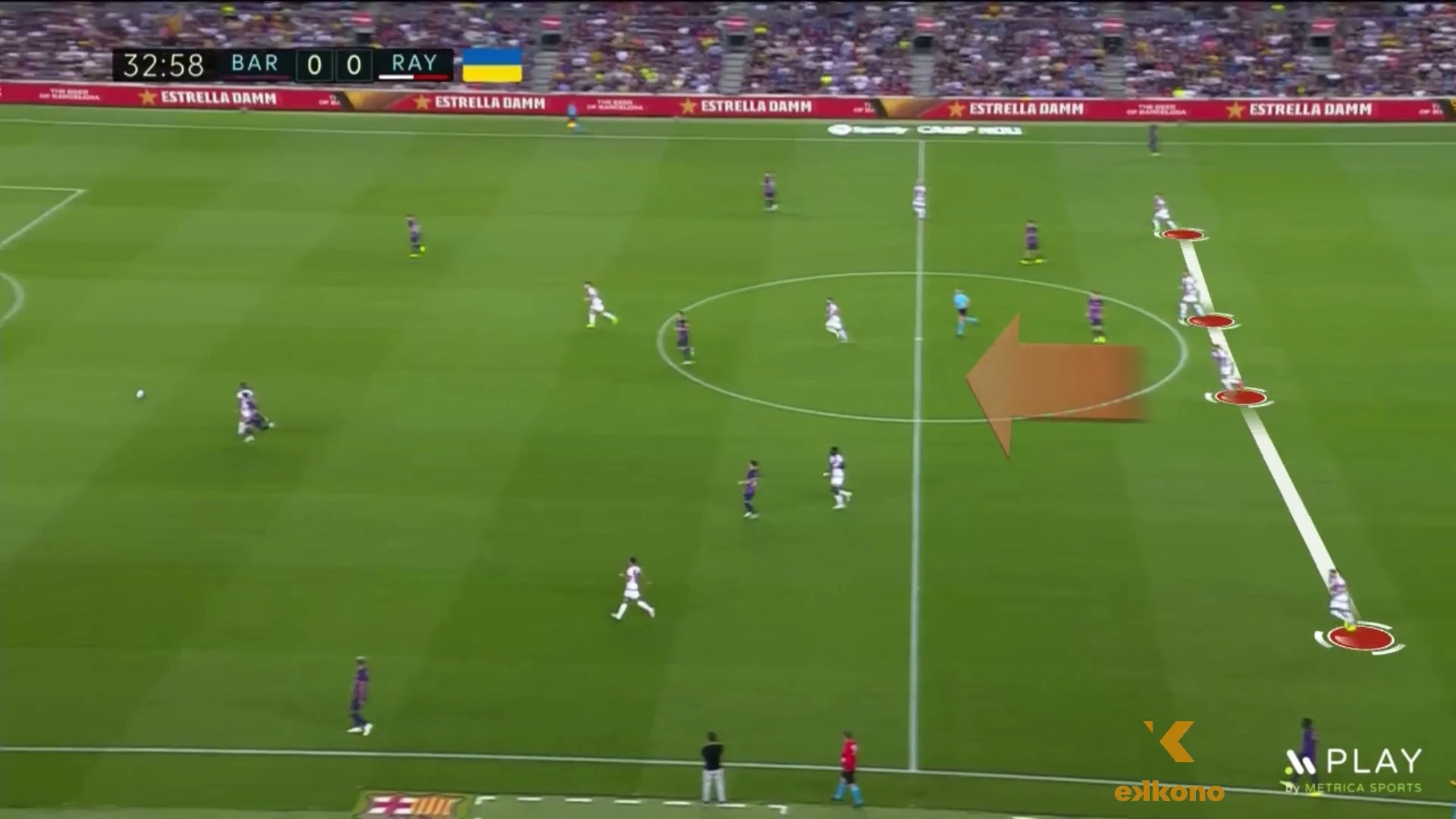
2 defensive line is pushing
In this example, when central back Christensen (Barcelona) plays back the defensive line is pushing in order to not allow Barca to play inside.
Anticipate the possibility of running back when the opponent has the opportunity to play a long ball
Defending well in a mid-block is impossible without defenders having good perception skills. They must constantly analyze the situation on the field and, depending on this, decide whether they need a push forward or whether they need to anticipate the possibility of running back. So, in a situation when an opponent’s player is under pressure and does not have the opportunity to make a good pass behind the defensive line, they must maintain the compactness of the defensive block. On the other hand, when an the ball possessor is free and there are players that potentially can receive the ball behind our defensive line, the defenders should start preparing to protect their backs by guiding their bodies and using some of the Individual Secrets which are specific for center backs and fullbacks.
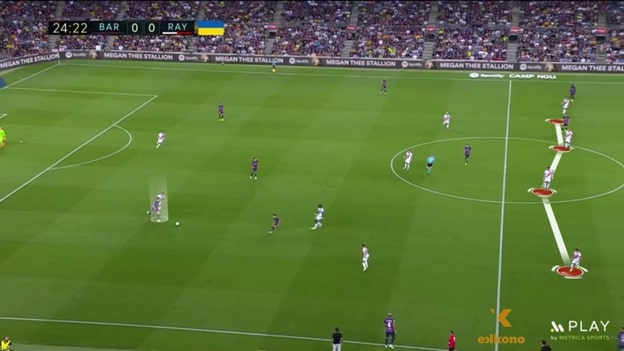
4 importance of defense line 1
In this situation, the Christiansen (CB) is under pressure and the defensive line is ready to push if he decides to play back.
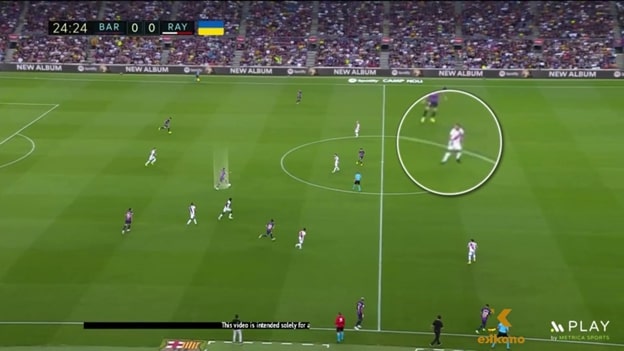
4 importance of defense line 2
But when Christensen (CB) plays to Busquets (MF) which is without pressure and has the opportunity to prepare a long pass behind the defenders the Rayo Vallecano defenders are ready to defend their back.
Be aggressive defending forward when opposite players receive the ball inside the block
Finally, despite the intention of having a compact block, sometimes it will not be possible to avoid the opponent team playing the ball to a player who is positioned inside our block. When that happens we must exert pressure on the player who is about to receive the ball, specially if they are facing their own goal, to try not to give him options to continue the attack and not allow them to have time and space to play a ball behind your defense. This is one of the most important principles we must ensure in a mid-block, as failing to apply it, would allow opponents have enough time and space to play the ball in advantage behind our defensive line, with a significant amount of space for other opponents to attack.
Defending well in a mid-block is impossible without defenders having good perception skills. They must constantly analyze the situation on the field and, depending on this, decide whether they need a push forward or whether they need to anticipate the possibility of running back. So, in a situation when an opponent’s player is under pressure and does not have the opportunity to make a good pass behind the defensive line, they must maintain the compactness of the defensive block. On the other hand, when an the ball possessor is free and there are players that potentially can receive the ball behind our defensive line, the defenders should start preparing to protect their backs by guiding their bodies and using some of the Individual Secrets which are specific for center backs and fullbacks.
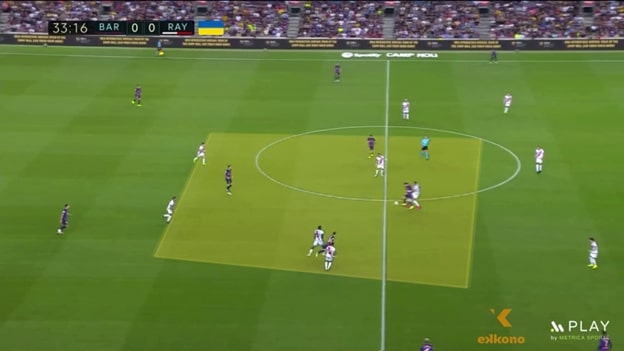
3 make a pressure inside a block
In this example, when Christensen (CB) plays inside to Lewandowski (ST) the central back of Rayo Vallecano follows him to not allow him have a possibility to progress and combine with teammates, while the teammates are closing the rest of the Barcelona players.
Conclusion
To sum up, defending well in a mid-block it is more than just positioning your players in the middle third of the pitch. Keeping your defensive line high and adjusting and adjusting the positioning of your defenders based on the ball holder situation, will be key to ensure a good defensive performance. Therefore, basic fundamentals related to perceptions skills must be taught to football players from a young age, to help them identify these situations and play the best solution required for each game situation. Coaches must ensure that players are not only aware of these principles but are also proficient in executing them in various in-game scenarios. By adhering to these guidelines, you’re equipping your team with the necessary skills and tactics to successfully defend in a medium block.
Learn more about individual and team fundamentals with our membership. Find more information here.

